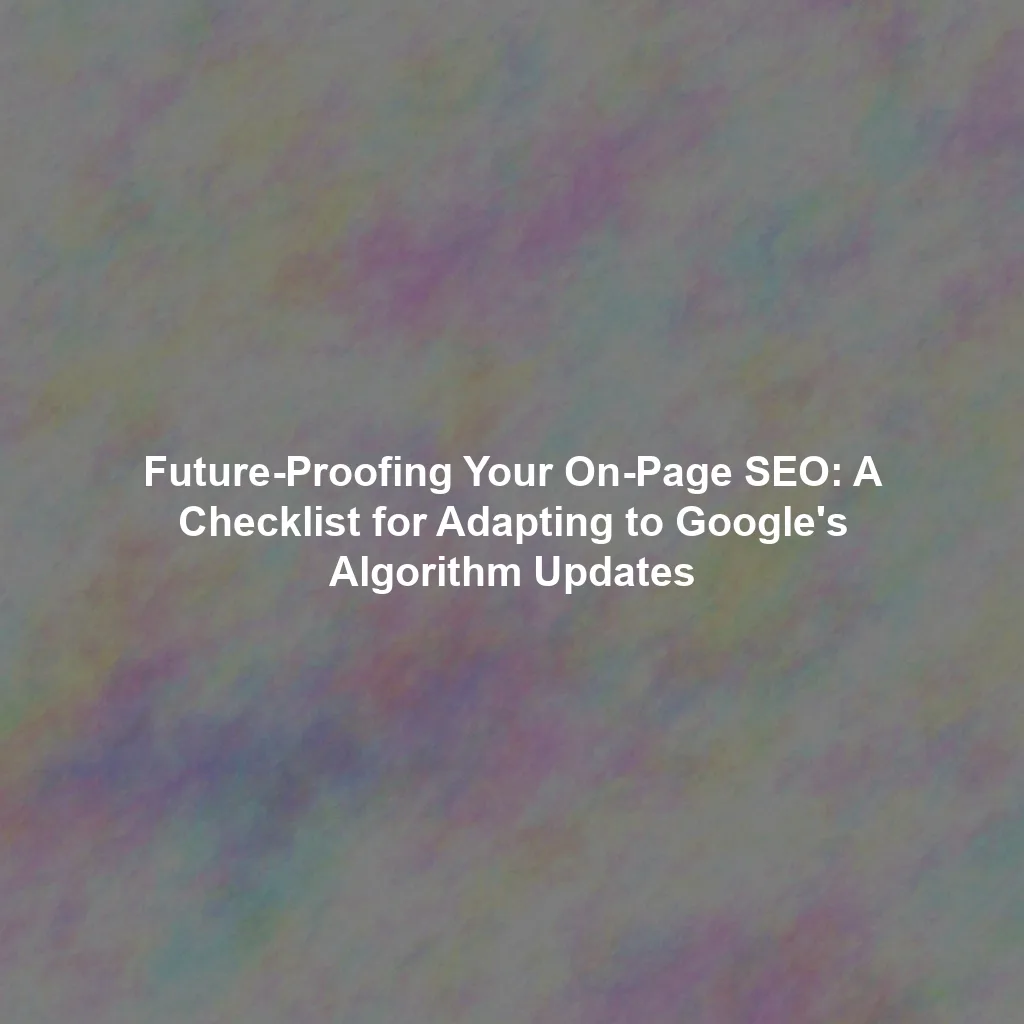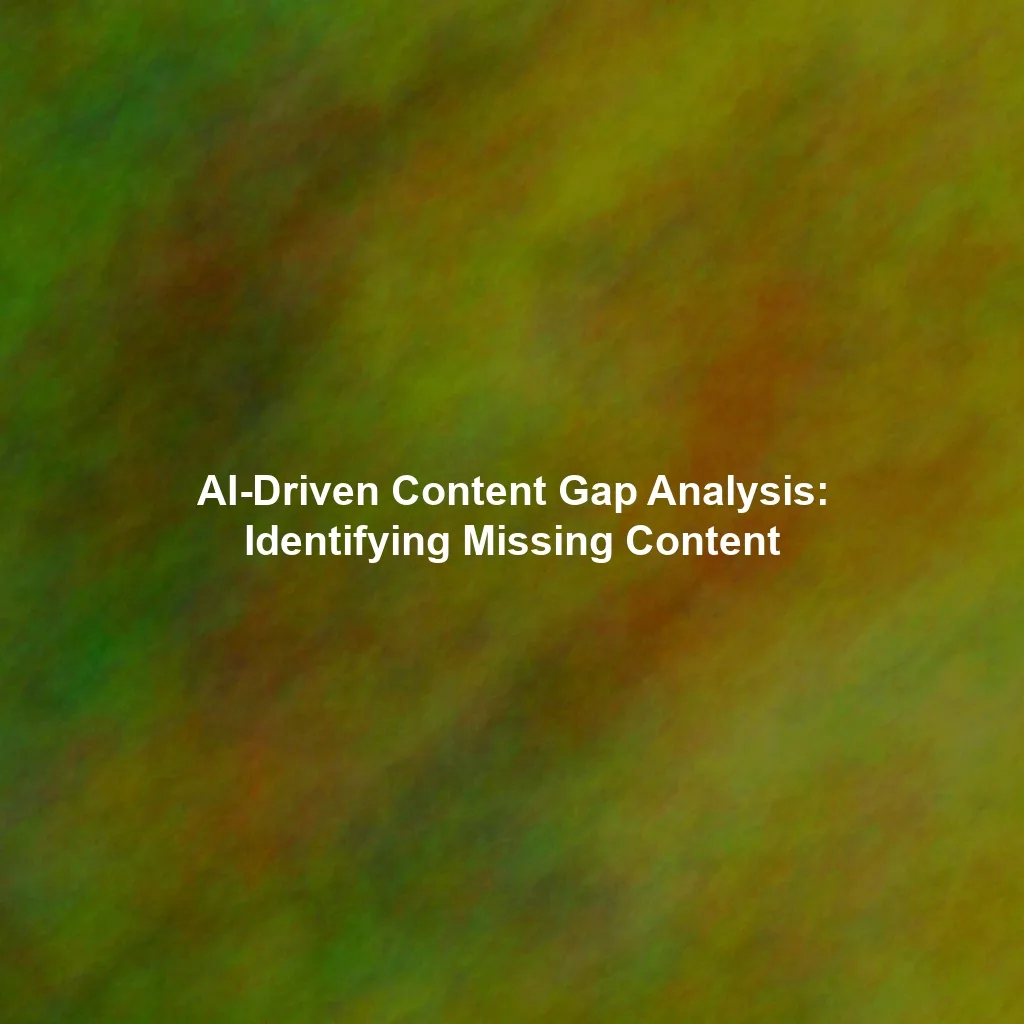What works today might be obsolete tomorrow. Instead of chasing every fleeting trend, the key to long-term success lies in building an on-page SEO strategy that is adaptable, resilient, and centered around providing genuine value to your audience. This article provides a comprehensive checklist to help you create a future-proof SEO foundation that can weather any algorithm update.
Understanding the Foundation: User-Centricity and Core Web Vitals
Google’s primary goal is to deliver the best possible search results to its users. Therefore, your on-page SEO efforts should always prioritize the user experience. This means creating content that is informative, engaging, and easily accessible, and ensuring your website provides a seamless and enjoyable browsing experience. Furthermore, Google’s emphasis on Core Web Vitals signals a shift towards rewarding websites that offer superior user experiences.
The Power of High-Quality Content
Content is the cornerstone of any successful SEO strategy. It’s not just about keywords; it’s about providing valuable information that satisfies user intent. Consider these aspects:
- Relevance: Does your content directly answer the user’s query?
- Accuracy: Is your information factually correct and up-to-date?
- Authority: Are you demonstrating expertise and trustworthiness in your niche? This relates heavily to Google’s EEAT (Experience, Expertise, Authoritativeness, and Trustworthiness) guidelines.
- Engagement: Is your content engaging and easy to read? Break up large blocks of text with visuals, bullet points, and subheadings.
- Uniqueness: Avoid duplicate content. Your content should be original and offer a fresh perspective.
Optimizing for Core Web Vitals
Core Web Vitals are a set of metrics that Google uses to measure user experience. These include:
- Largest Contentful Paint (LCP): How quickly the main content of your page loads.
- First Input Delay (FID): How quickly your page responds to user interactions.
- Cumulative Layout Shift (CLS): How much unexpected layout shift occurs on your page.
Optimizing for these metrics can significantly improve your search rankings. Tools like Google PageSpeed Insights can help you identify areas for improvement.
Building a Solid Site Structure
A well-organized site structure is crucial for both users and search engines. It allows Google to easily crawl and index your website, and it helps users find the information they’re looking for quickly and easily.
Key Elements of a Strong Site Structure:
- Clear Navigation: Implement a clear and intuitive navigation menu that allows users to easily find what they’re looking for.
- Internal Linking: Link related pages together to help users discover more content and to signal the importance of different pages to Google.
- XML Sitemap: Submit an XML sitemap to Google Search Console to help Google crawl and index your website more efficiently.
- Logical URL Structure: Use descriptive and keyword-rich URLs that reflect the content of the page.
On-Page SEO Checklist: Staying Ahead of the Curve
Here’s a practical checklist to ensure your on-page SEO remains future-proof and adaptable:
- Regularly Update Content: Review and update your content regularly to ensure it’s accurate, relevant, and up-to-date. Address any outdated information and incorporate new insights.
- Optimize for Mobile: Ensure your website is fully responsive and provides a seamless experience on all devices.
- Improve Page Speed: Optimize images, leverage browser caching, and minify CSS and JavaScript to improve page loading speed.
- Use Schema Markup: Implement schema markup to provide search engines with more context about your content.
- Monitor Google Search Console: Regularly monitor Google Search Console for any errors, warnings, or performance issues.
- Stay Informed: Keep up-to-date with the latest SEO news and best practices by following reputable industry blogs and attending webinars.
- Analyze Competitors: Analyze your competitors’ websites to identify areas where you can improve your own SEO strategy.
- Keyword Research: Continuously perform keyword research to identify new opportunities and adapt to changing search trends. Don’t just focus on individual keywords, understand the user intent behind the search queries.
- Image Optimization: Optimize images by compressing them, using descriptive alt text, and choosing the right file format.
- Prioritize User Experience: Always prioritize the user experience by creating content that is informative, engaging, and easy to read.
Monitoring Google Search Console
Google Search Console is your direct line to Google. It provides valuable insights into how Google sees your website, including:
- Crawl Errors: Identify and fix any errors that prevent Google from crawling your website.
- Index Coverage: Ensure that all of your important pages are being indexed by Google.
- Performance Data: Track your website’s performance in search results, including clicks, impressions, and average ranking position.
- Mobile Usability Issues: Identify and fix any mobile usability issues that are affecting your website’s performance.
Regularly monitoring Google Search Console is essential for identifying and addressing any potential SEO issues.
Conclusion
Future-proofing your on-page SEO is an ongoing process that requires continuous effort and adaptation. By focusing on high-quality, user-centered content, maintaining a clean site structure, and staying up-to-date with the latest SEO best practices, you can build a resilient SEO foundation that can withstand the test of time. Remember, SEO is not a one-time fix; it’s a continuous journey of improvement and adaptation. By implementing the checklist outlined in this article, you’ll be well-equipped to navigate the ever-changing landscape of search engine optimization and achieve long-term success.
 Skip to content
Skip to content

